Material guide — Wood
Decorating with natural materials is both inspiring and full of charm – not least because each piece of furniture has its own unique character thanks to the natural grain and texture of the wood. In this guide, we’ve compiled useful information for those planning to invest in wooden furniture, making it easier to find the type of wood and surface treatment that best suits your daily needs – whether at home or in the office.
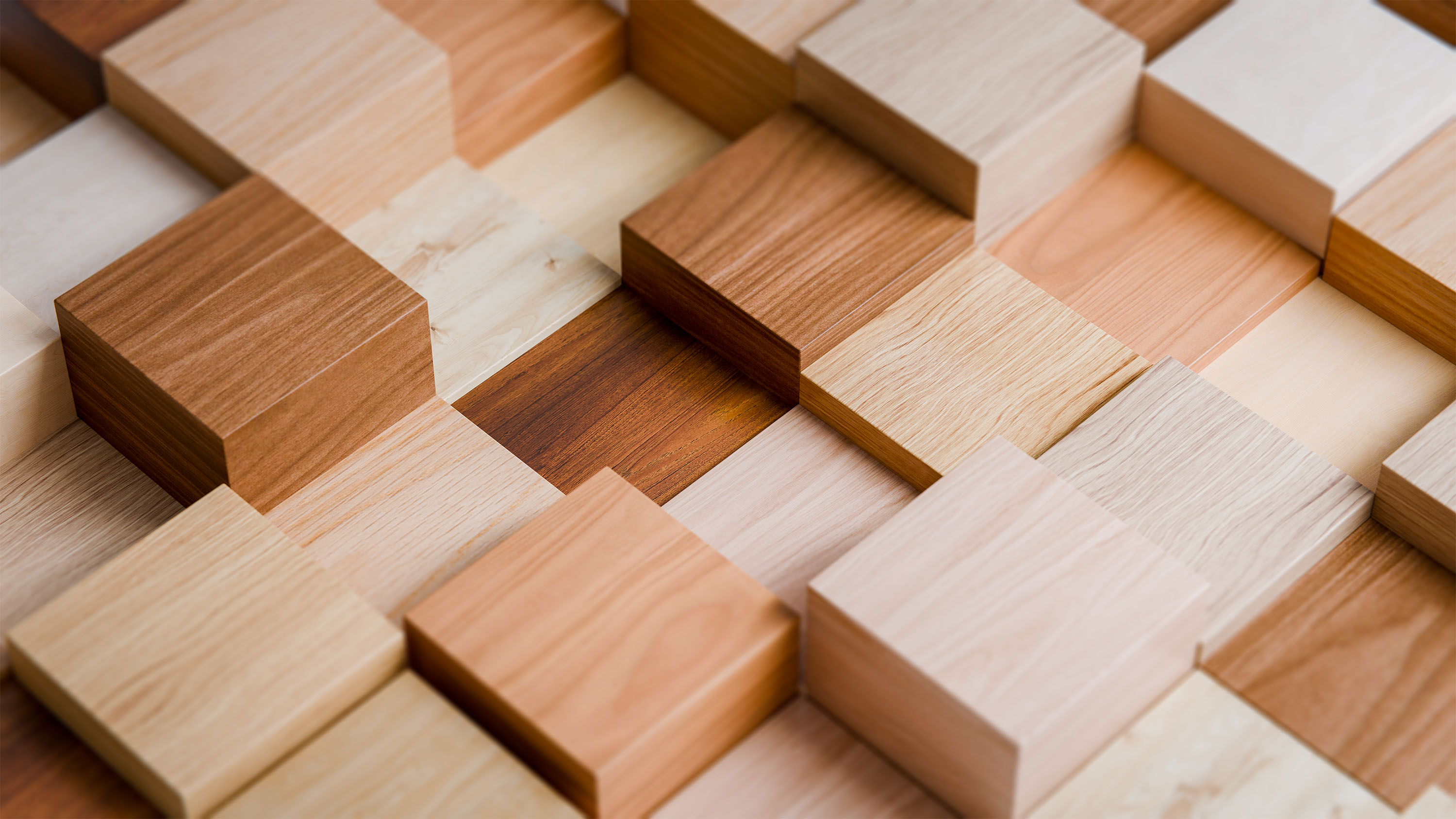
Different types of wood
The type of wood you choose for your furniture plays a major role in the overall aesthetic. The natural tones and patterns of the wood significantly affect how the furniture is perceived and can completely change its character. Below is an overview of the types of wood we most commonly work with at Soeco by Yllw – like oak, ash, and beech – as well as some rarer, more exclusive varieties like walnut, cherry, and teak.
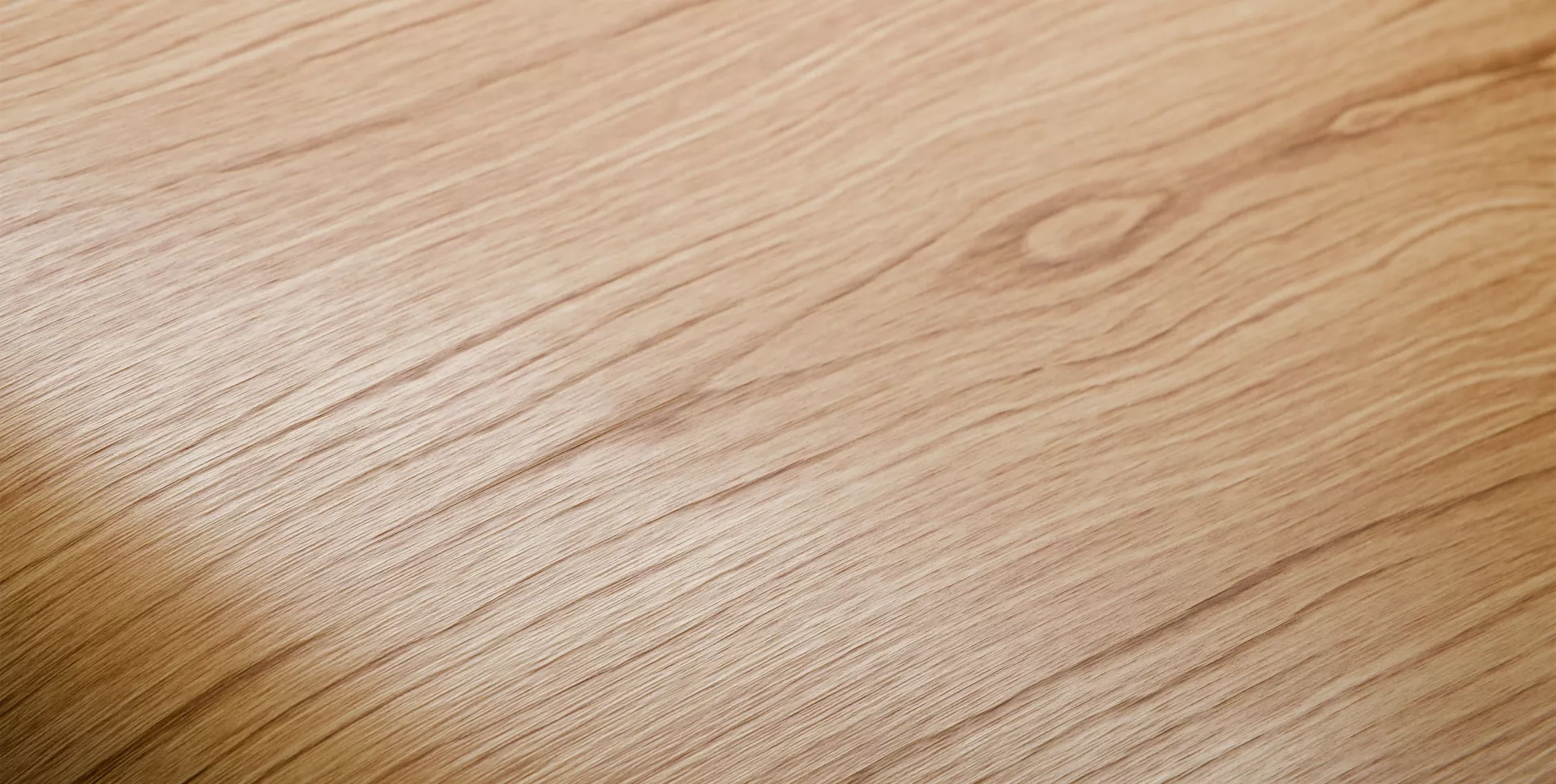
Oak is undoubtedly one of the most popular woods, as evident in the wide range of furniture available in this material. Thanks to its natural color and beautiful grain, oak can accommodate a wide range of surface treatments – from soap and oil to stain or lacquer – all of which enhance the wood's character.
Oak is also extremely durable and resistant to moisture, making it a solid choice. A chair or table made from solid oak can last for generations with proper care.
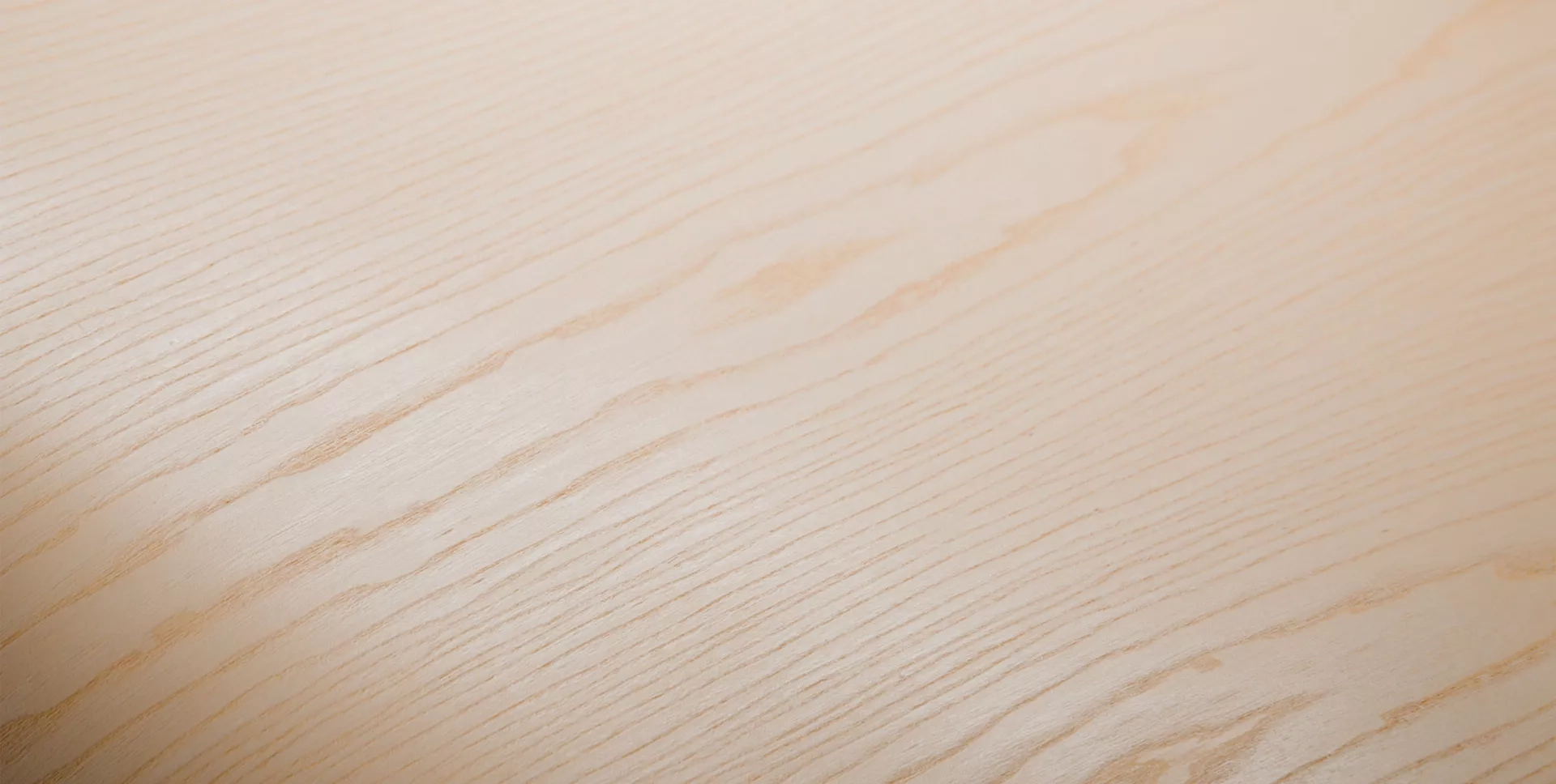
Ash is a popular choice for those seeking a light-colored wood, thanks to its natural shades of white, yellow, and occasionally light brown. Like oak, ash works well with various surface treatments – especially soap and clear lacquer, but stain also enhances its lively character.
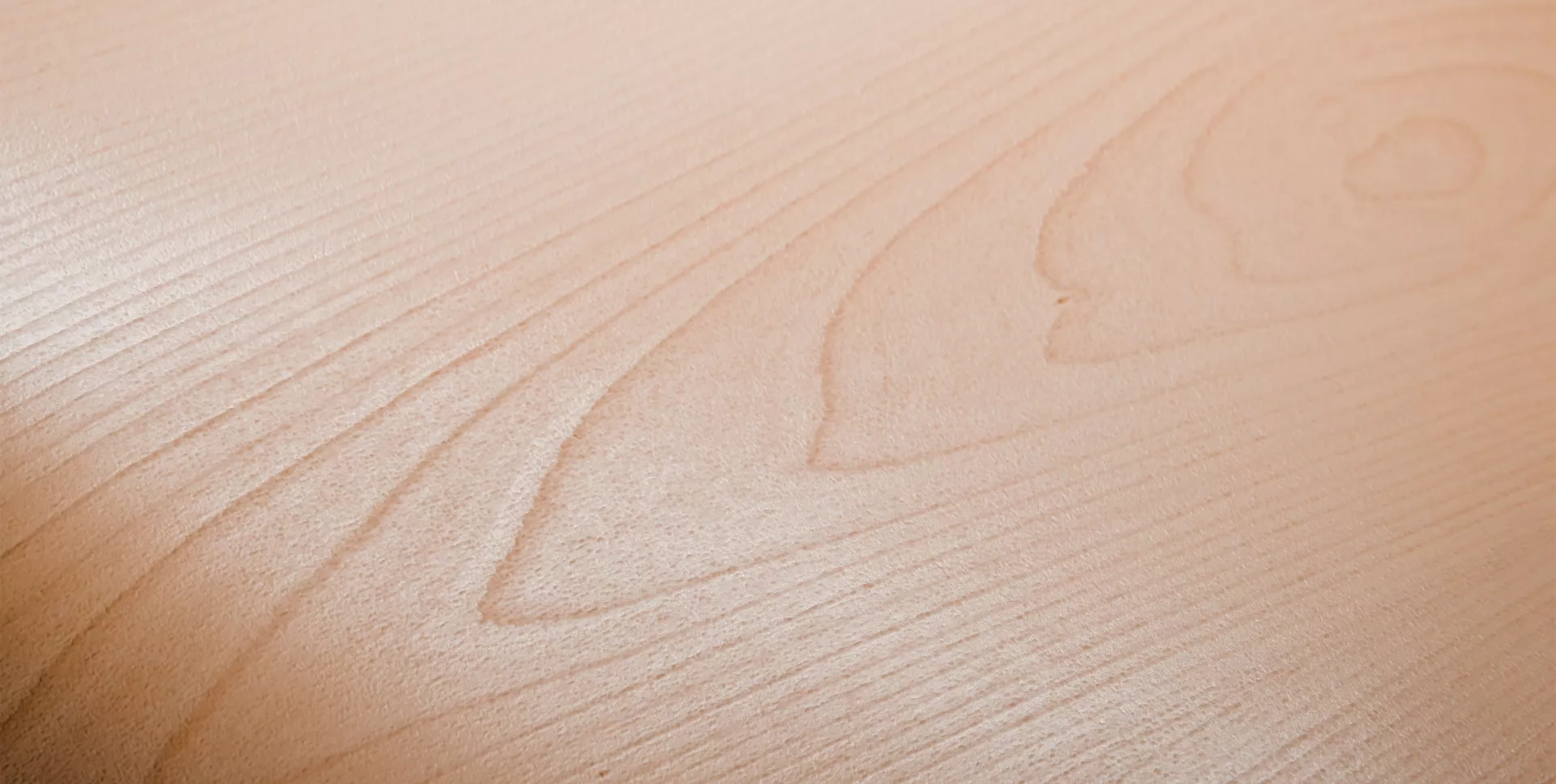
Beech is commonly used in furniture manufacturing, especially for bentwood designs. This is because the lignin in beech softens easily with steam, allowing it to be shaped in a variety of curved forms. Classic examples include Gemla’s Wien, Jonas Bohlin’s Vilda, Michael Thonet’s Chair 14, and August Thonet’s Chair 18. Beech has a naturally light tone that can develop a reddish hue after steam treatment.
Compared to many other types of wood, beech has a very subtle grain, making it ideal for painted furniture where a smooth, even surface is desired. A soaped finish can also create a lighter appearance than what’s possible with, for example, oak or ash.
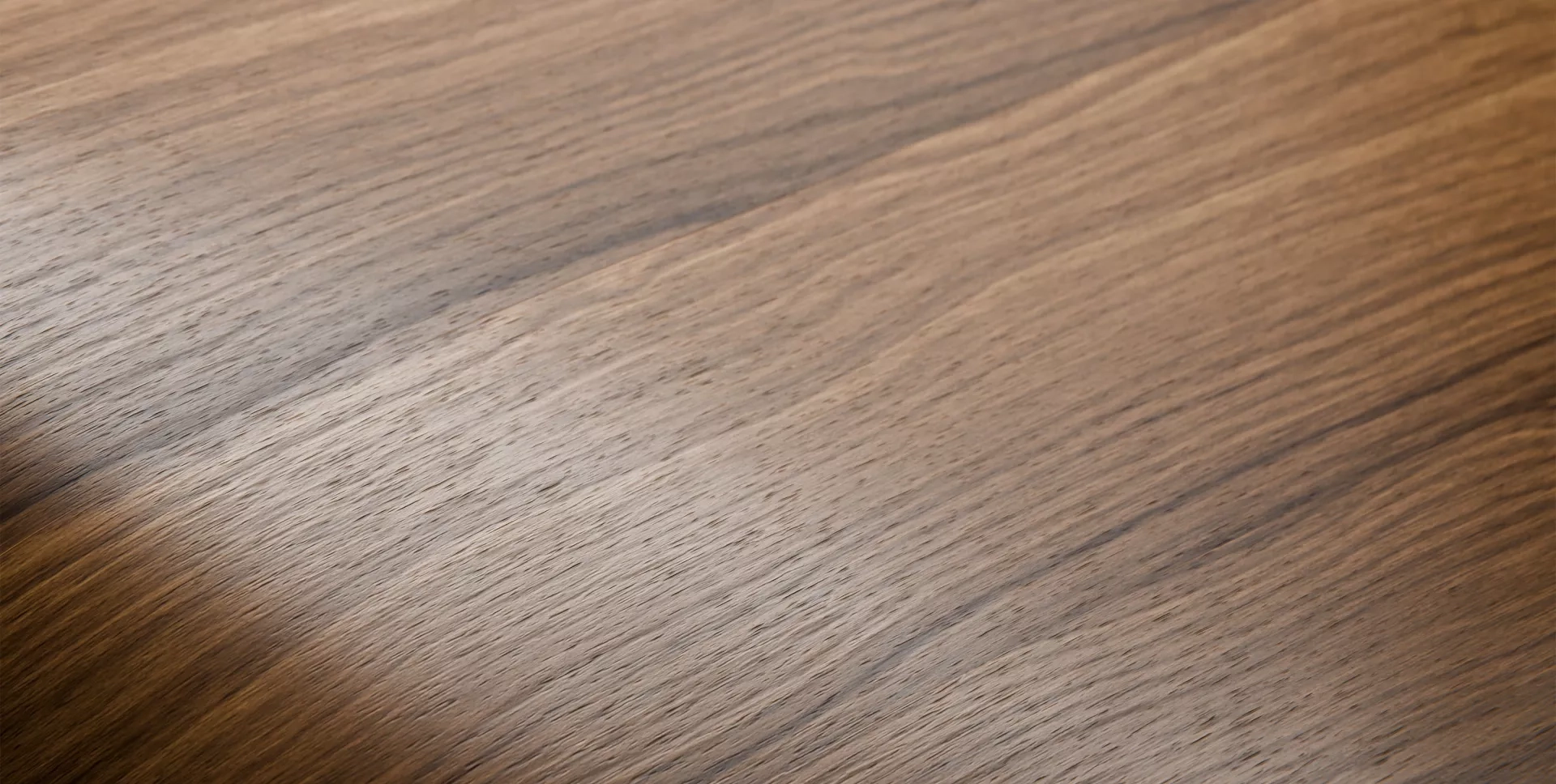
Walnut is a durable and robust wood that conveys a sense of exclusivity through its stunning variation between light and deep brown shades. Furniture made from walnut is generally more expensive than pieces made from lighter woods – especially solid wood tables. To reduce costs, walnut veneer is often used, offering the same elegant look at a more accessible price.
Walnut furniture typically highlights the wood’s natural appearance. For that reason, surface treatments are usually limited to oil or clear lacquer, both of which complement the dark wood beautifully. It’s also common to see lighter woods like oak or beech stained to resemble walnut, offering a similar look at a lower cost.
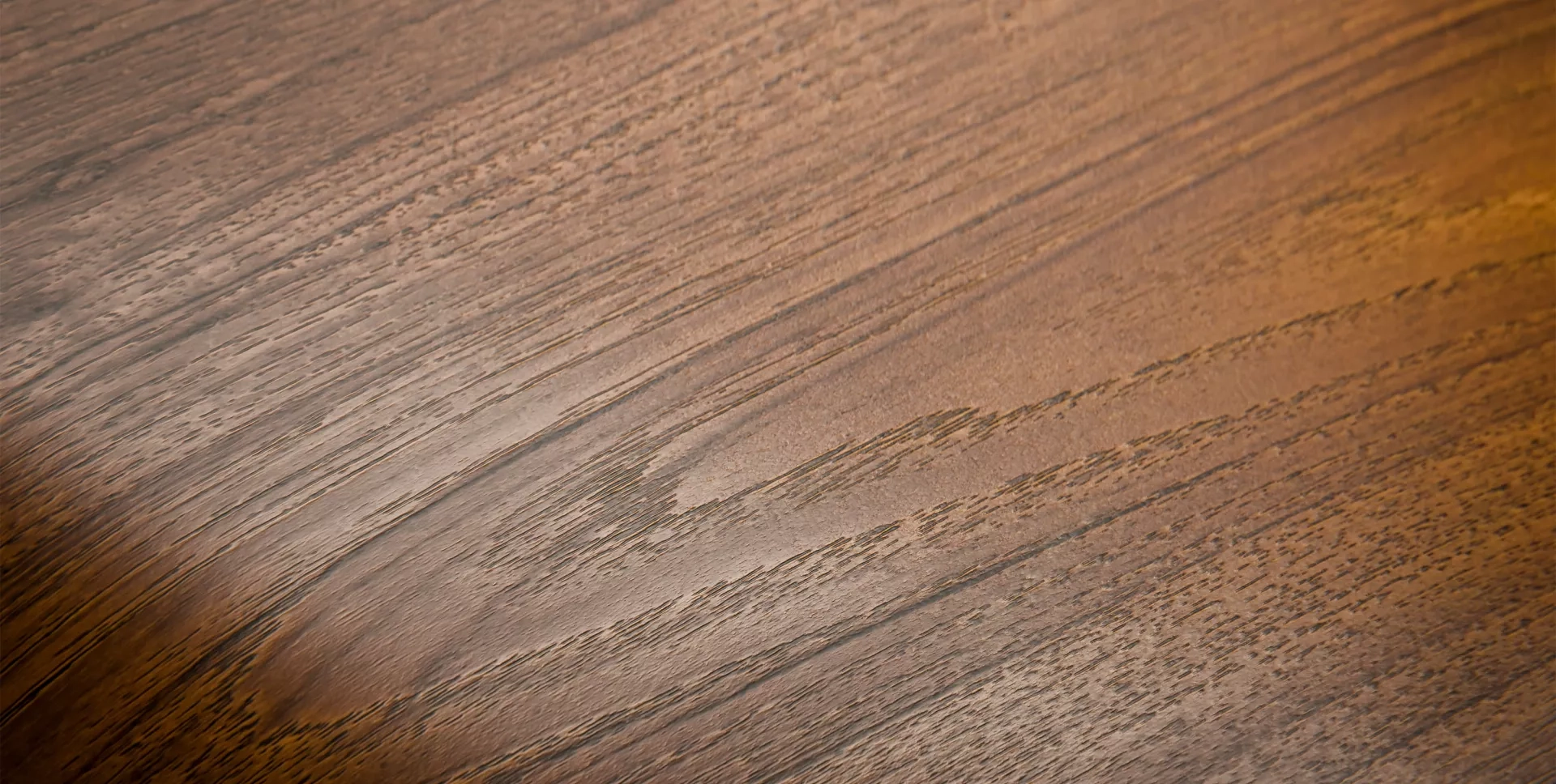
Teak is a highly appreciated wood, thanks to its natural durability – ideal for outdoor furniture – and its deep reddish-brown color that adds a warm and exclusive feel. However, as demand has increased and availability in wild forests has decreased, teak has gained a reputation for being a less sustainable choice. We therefore encourage the use of cultivated teak from certified, responsibly managed forests.
Despite its association with outdoor use, teak is also a decorative wood for interiors. It’s often used in smaller amounts as contrast against lighter woods – a good example is Yngve Ekström’s Lamino, available with an oak frame and teak armrests. Like walnut, teak looks best when treated with oil or clear lacquer to highlight its natural color and grain.
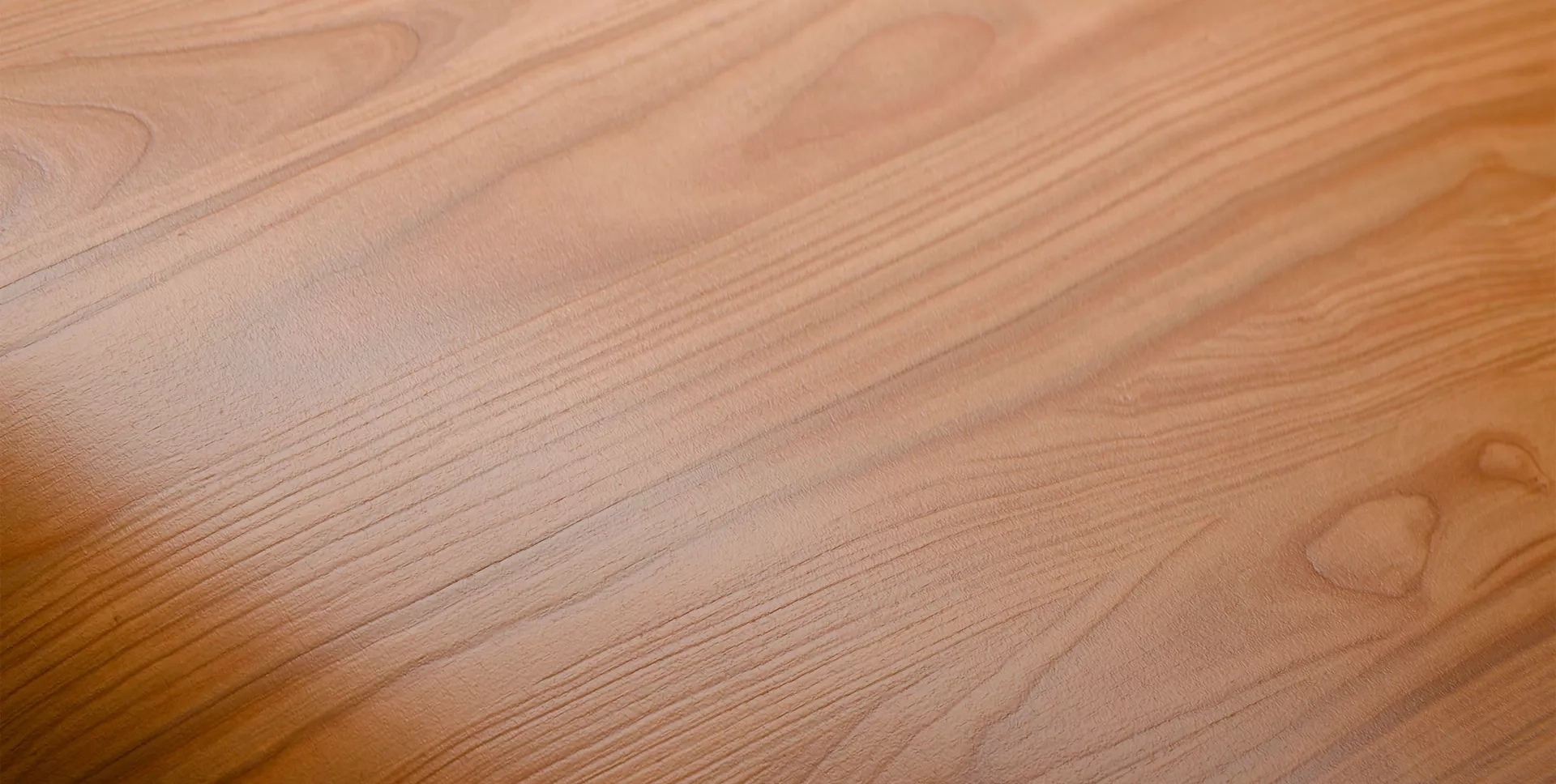
Cherry wood features a relatively subtle grain but stands out with warm tones ranging from reddish-yellow to reddish-brown. Cherry is usually treated with oil or clear lacquer to bring out its natural beauty. Over time and with exposure to daylight, the wood darkens and develops a beautiful cognac-toned patina.
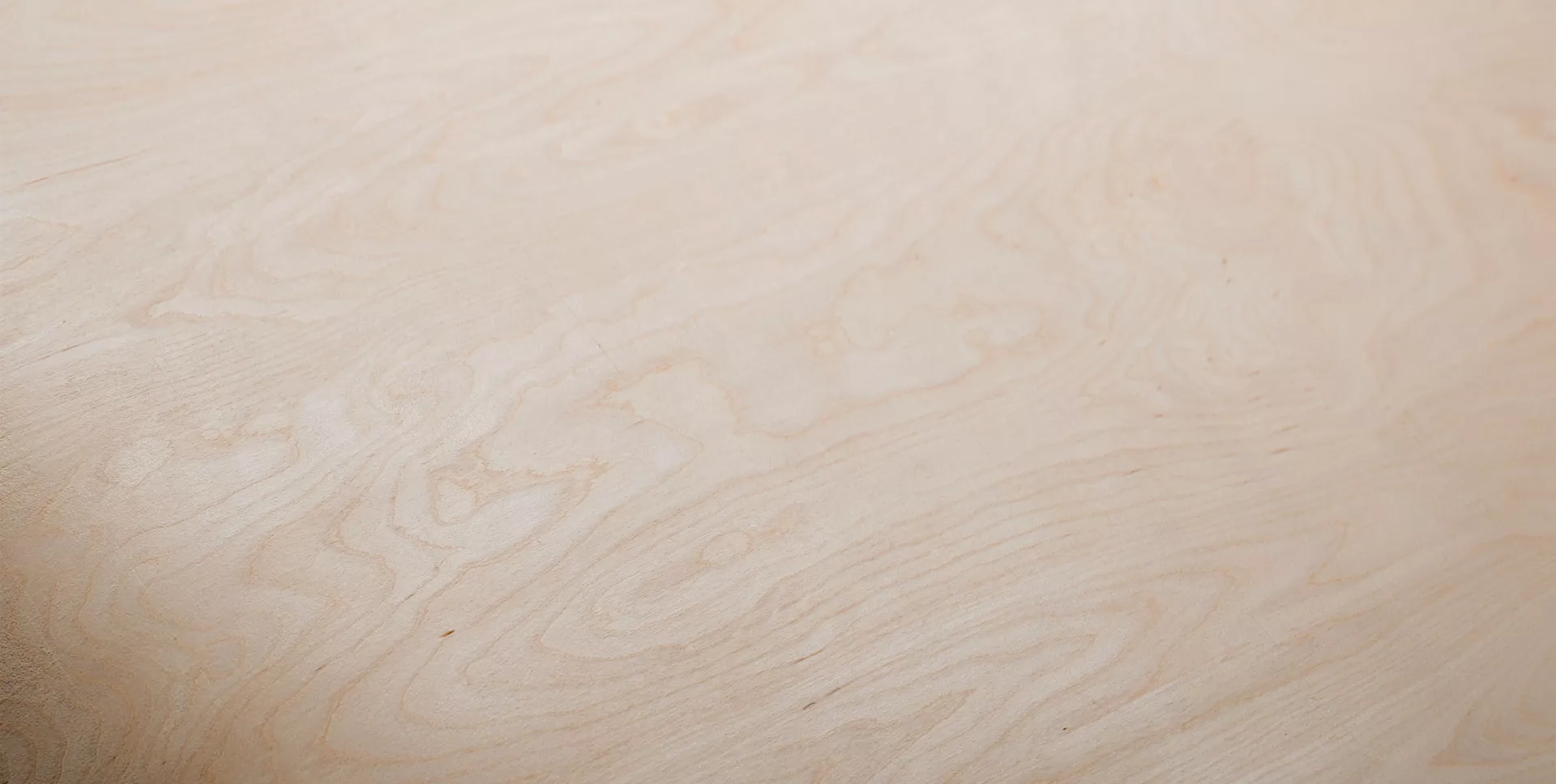
During the 1930s, birch was commonly used in furniture manufacturing, though today it’s more rarely seen. One of birch’s most interesting qualities is its variety – from the smooth, subtle surface of downy birch to the livelier, figured grain of silver birch. Its color range also varies, from soft yellows and whites to deeper reddish hues.
At Soeco by Yllw, we rarely receive birch furniture, except for occasional classics from brands like Artek. For durability, downy birch is typically used, although it can sometimes appear visually plain. The more decorative silver birch, with its expressive patterning, is often used as an accent material where its character can shine.
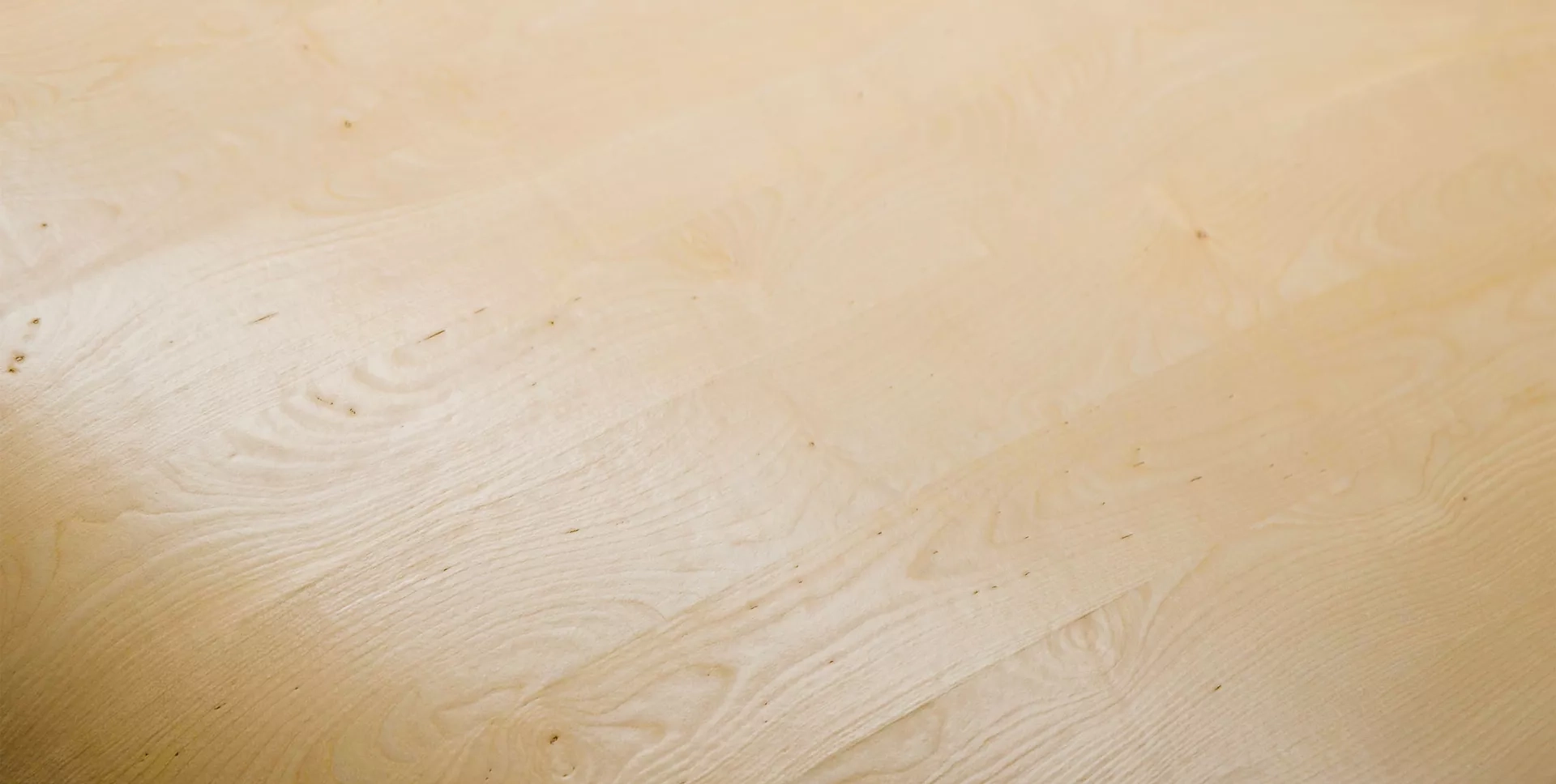
Maple has a similar brightness to birch but is distinguished by a more vibrant character, thanks to its flame-like, prominently marked grain, which creates a soft, organic pattern. The wood is also virtually free from knots and irregularities, making it especially suitable for bentwood. Maple is compatible with most types of surface treatments and produces a clean, stylish finish.
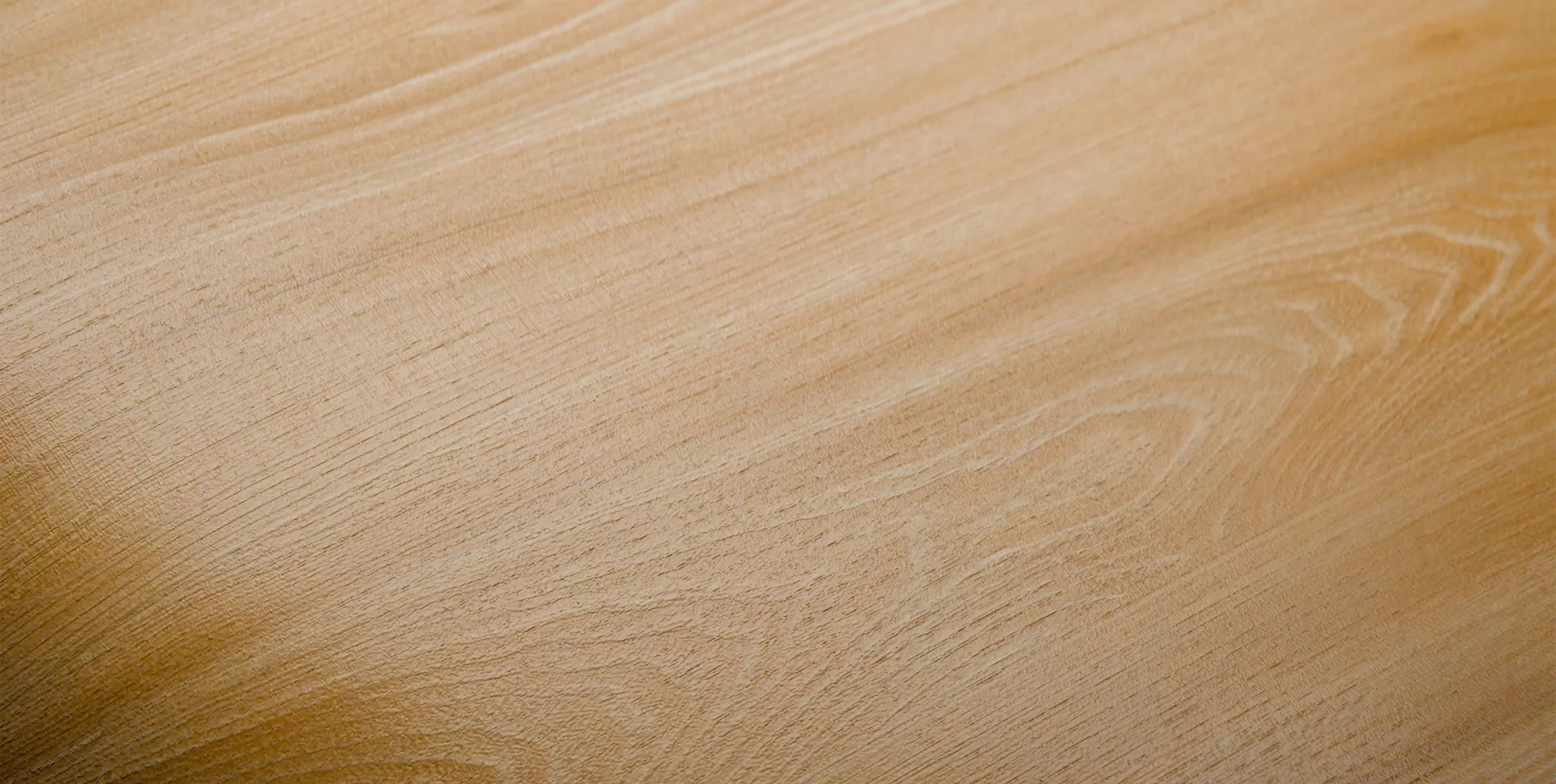
Though not commonly found in our assortment, elm is a wood with strong visual appeal. Its grain is vivid and decorative, creating a lively and distinct feel. In its untreated form, elm has a yellowish tone that darkens over time to a deep brown. The wood works well with most finishes, but oil and clear lacquer especially enhance its natural patterns.
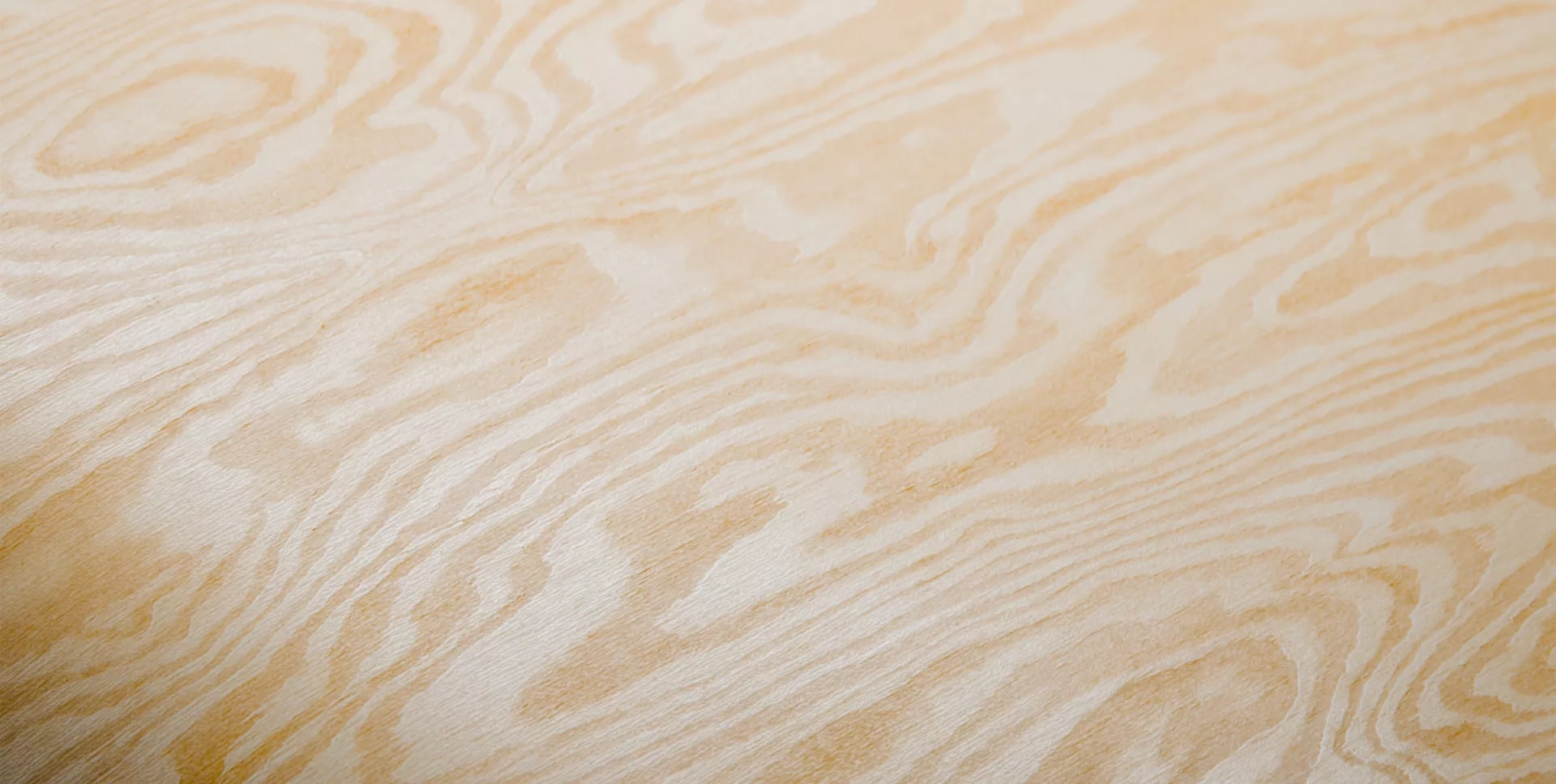
Pine is characterized by its warm, golden-yellow hue and lively grain pattern with visible knots, giving it a rustic and natural appearance. It is a relatively soft wood, which makes it easy to work with, but also somewhat sensitive to dents and scratches.
Although pine is no longer as popular as oak or ash, it is still commonly used in furniture manufacturing – especially as a frame material in upholstered pieces such as sofas and armchairs. It is also frequently used in plywood production due to its stability and versatility. Surface treatments such as soap, oil, or clear lacquer enhance pine’s natural beauty and help protect the surface.
Surface treatments
Choosing the right surface treatment is just as important as selecting the wood – it affects not only the appearance but also the wood’s durability over time. Below, we outline the most common treatments, their benefits, and why it may be worth reconsidering your first choice depending on how the furniture will be used.
Note: If you plan to treat your furniture yourself with soap, oil, lacquer, or other care products, it’s essential to follow the instructions carefully. Make sure the product is suited for the specific type of wood. If sanding is required, proceed with great caution – we recommend consulting a professional to avoid irreversible damage. At Soeco by Yllw’s workshop, our skilled craftsmen have years of experience restoring and refreshing wooden furniture in a wide range of woods and finishes.
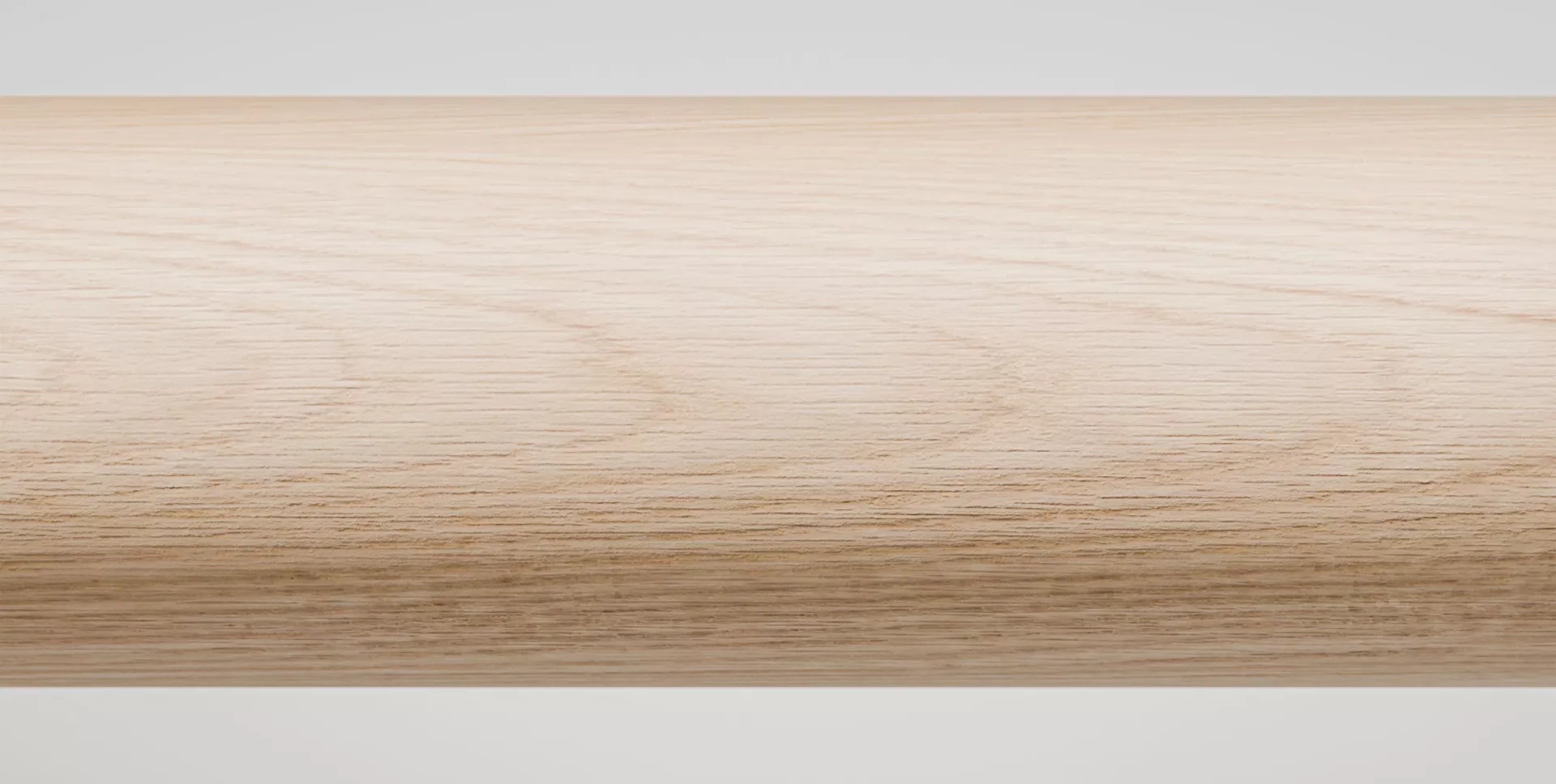
Soap treatment – also referred to as lye or soap wash – is a highly popular finish for woods like oak, ash, and beech. It enhances a light, fresh appearance without muting the wood’s natural beauty and grain.
The main drawback is that tabletops used daily may need frequent treatment – sometimes weekly. Over time, this need decreases, and the process is simpler than it sounds. Typically, it involves wiping the surface with a homemade soap solution that you can prepare in advance and store conveniently.
Soap provides good protection against everyday stains like coffee, wine, or juice. These can usually be wiped away with a fresh soap solution. More stubborn grease marks may require light sanding with fine sandpaper if they don’t disappear after repeated cleaning.
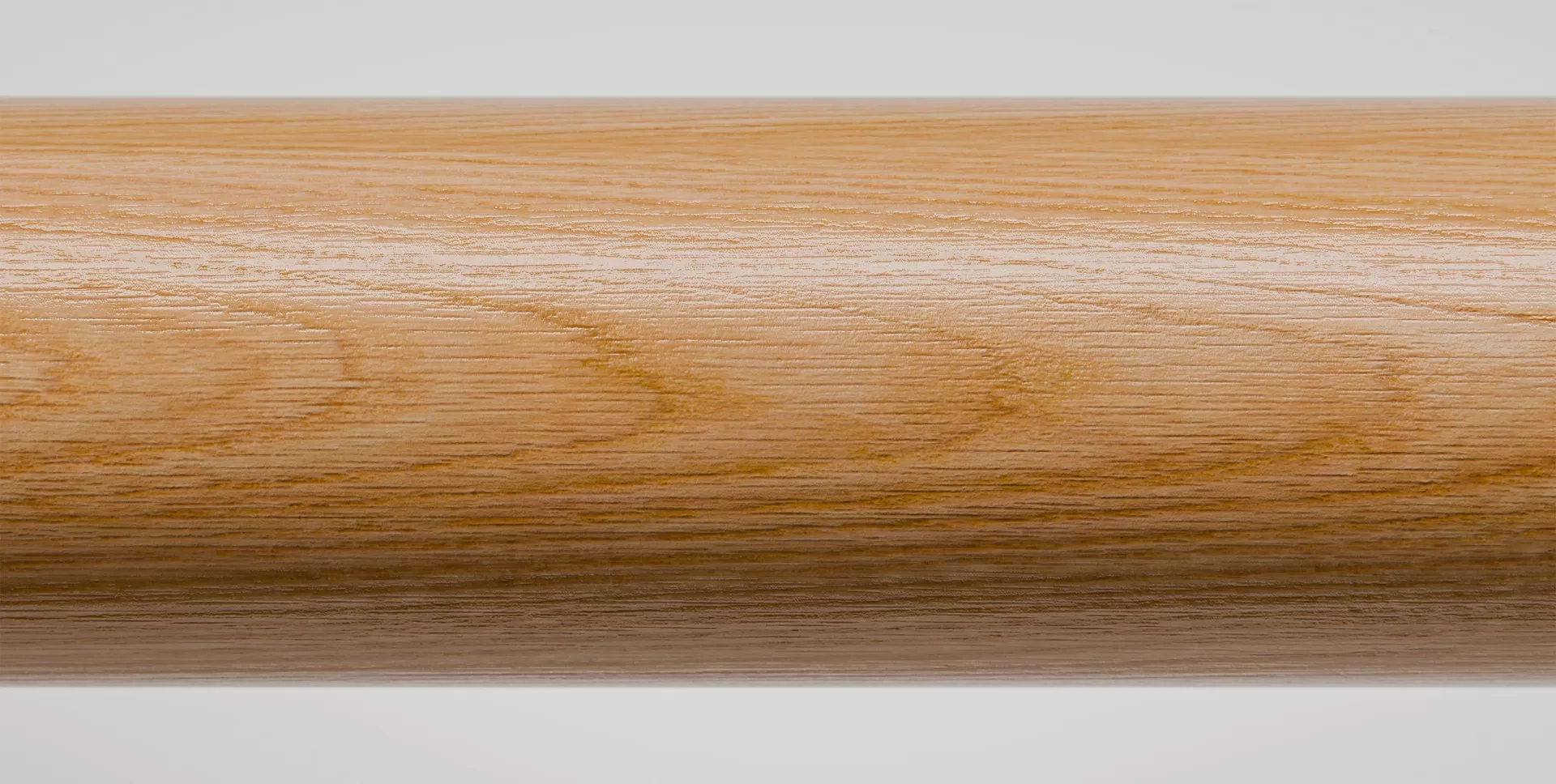
Clear lacquer is ideal if you want to preserve the wood’s natural tone and color as much as possible. As the name suggests, it provides a transparent – often slightly glossy – finish. It’s a great choice if you want a treated wood that requires minimal maintenance. The main downside is that scratches and marks are more difficult to repair compared to other finishes.
Since the lacquer seals the wood’s pores, it prevents the material from drying out and offers excellent stain protection – most spills can be wiped away easily. However, avoid placing glasses directly on the surface without coasters, as this can still cause rings.
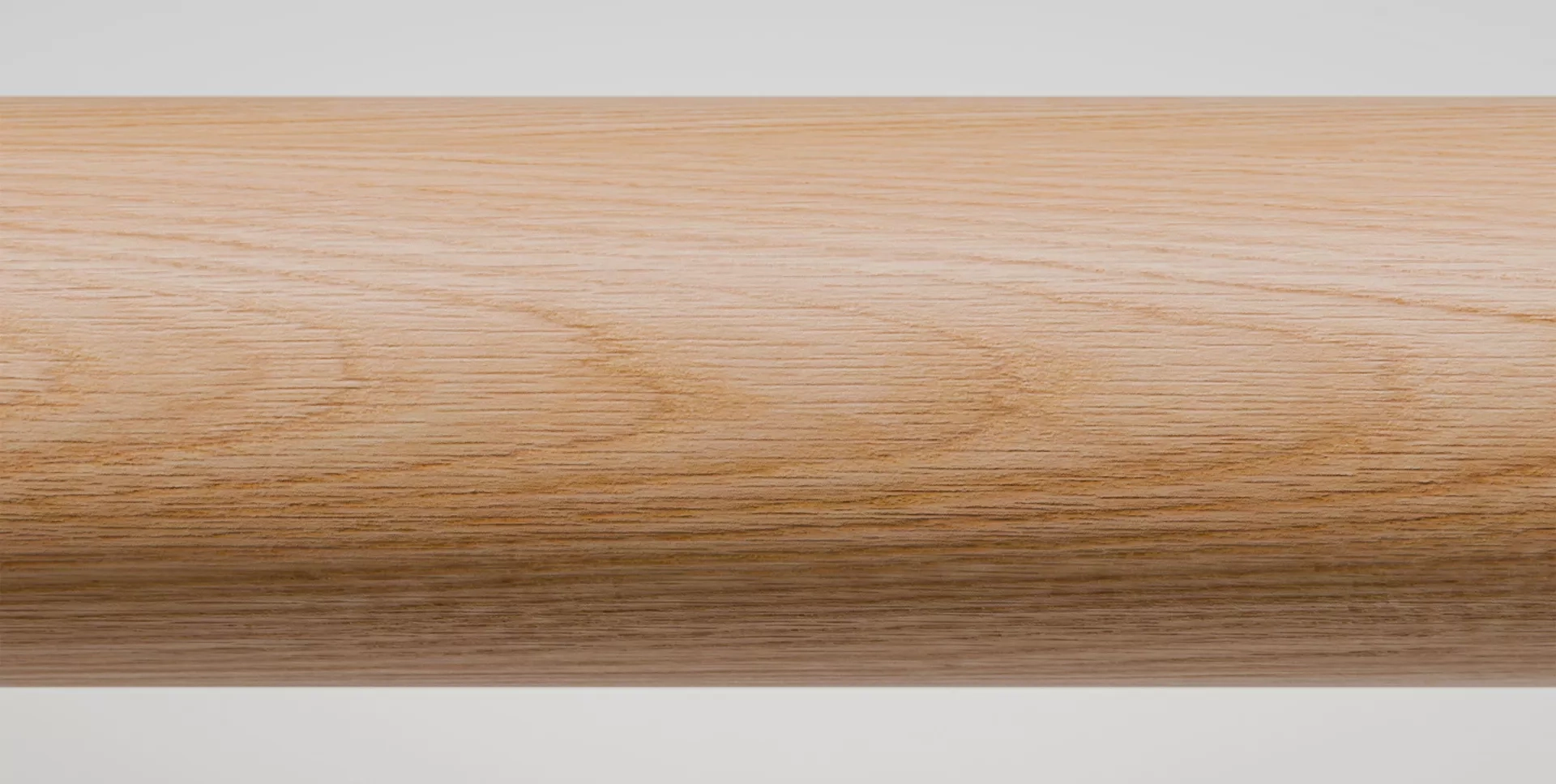
Matte lacquer functions similarly to clear lacquer by sealing the pores and preventing drying, but it offers a different look. Instead of a glossy finish, you get a soft, matte surface that feels more subdued and natural. The surface also often appears slightly lighter, contributing to a gentler overall impression.
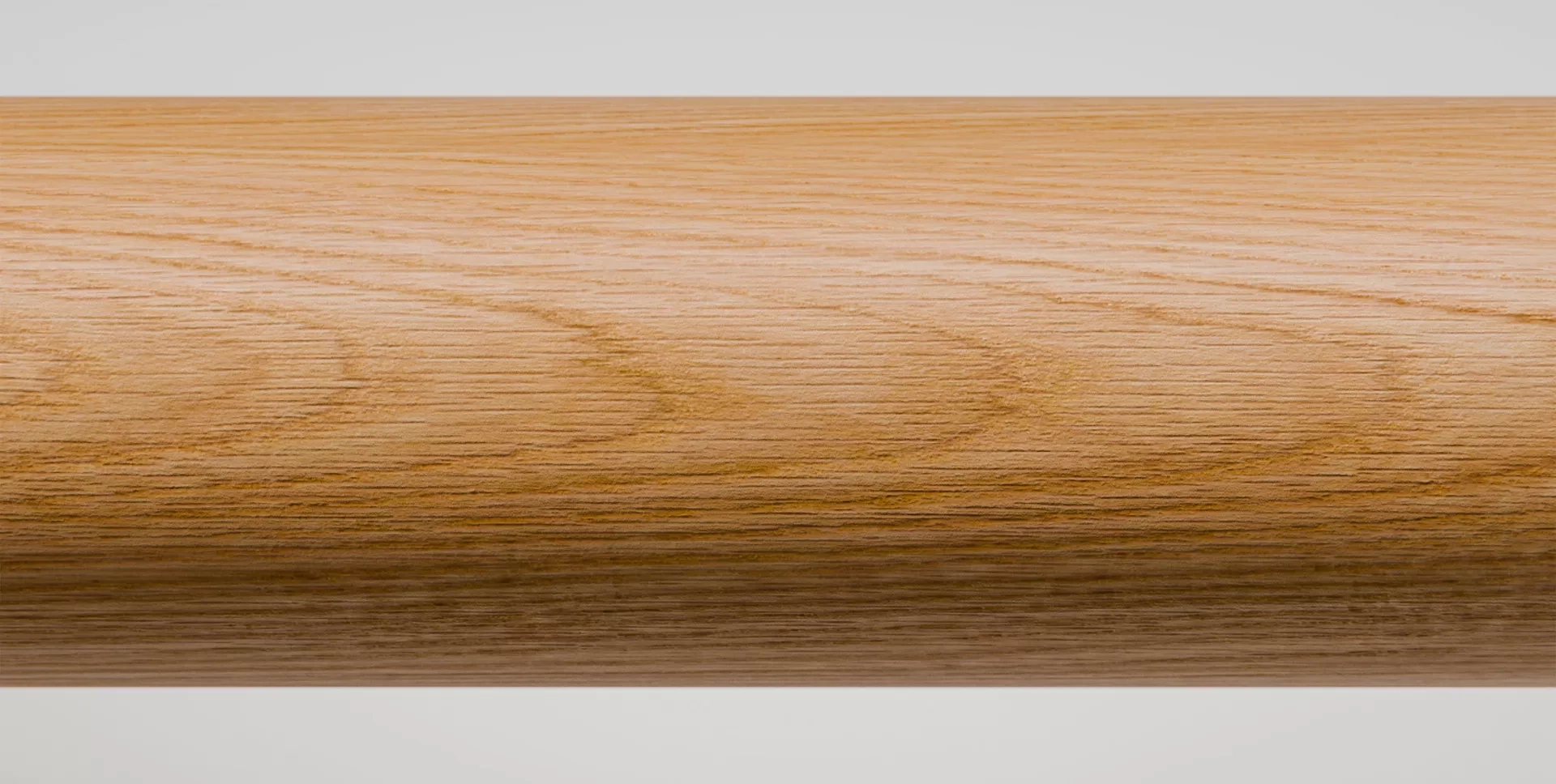
Oiling saturates the wood with liquid, making it far more resistant to grease stains – the wood’s absorption capacity is significantly reduced. However, other liquids should still be wiped up quickly, as they can stain if left too long.
Oiled surfaces require some maintenance. Depending on use, re-oiling once a year may be enough. Heavily used furniture, such as dining tables, will need more frequent care than shelves or chairs.
Important: After oiling, store used cloths and brushes in an airtight container, as they can spontaneously combust. A sealed plastic bag works well – make sure to squeeze out all the air before sealing it tightly.
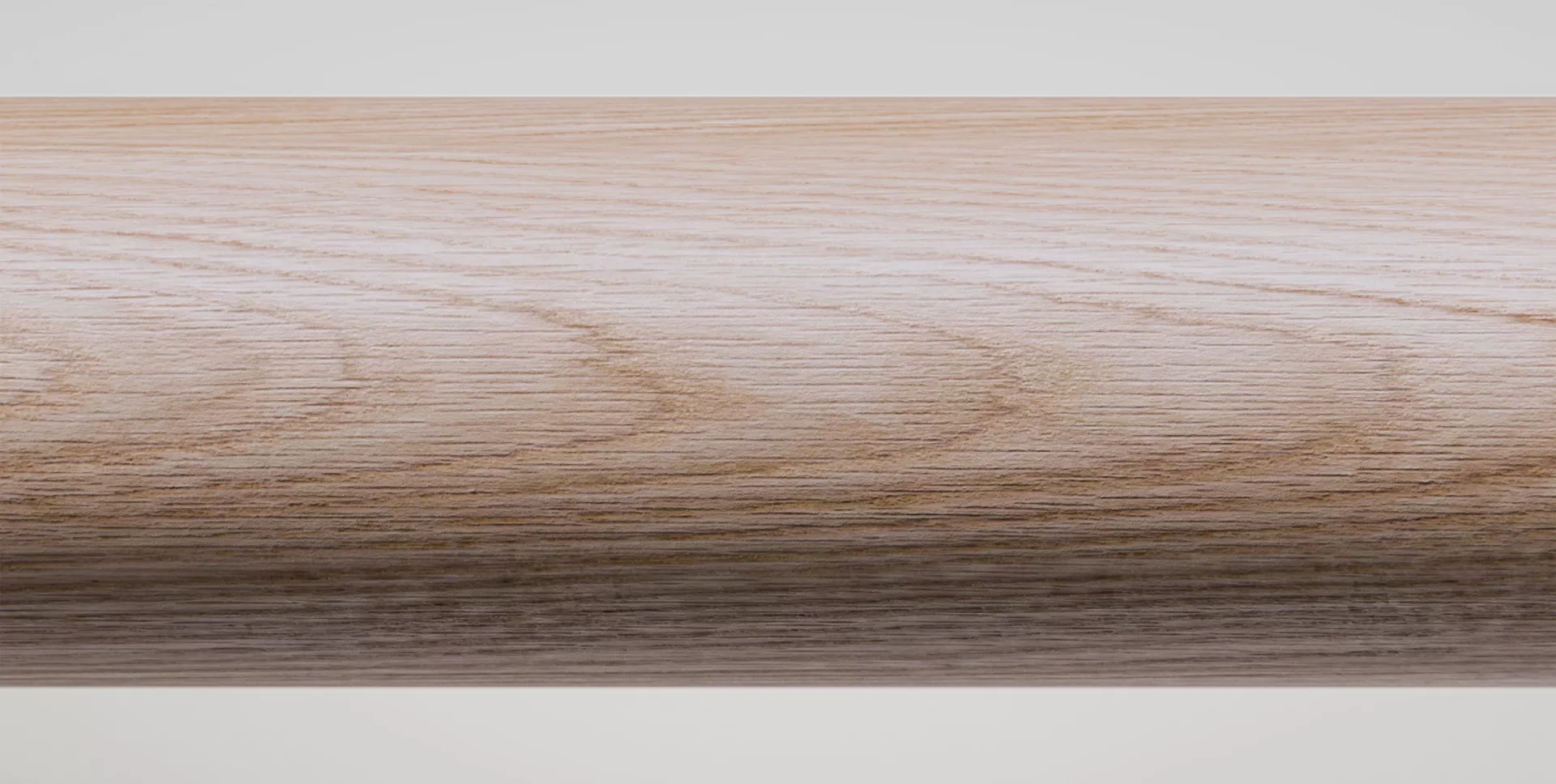
The difference between regular and white oil lies primarily in the visual result. Traditional oil tends to warm and darken the wood slightly, while white oil gives a cooler, lighter appearance with a whitewashed finish. In terms of stain protection and maintenance, both perform similarly.
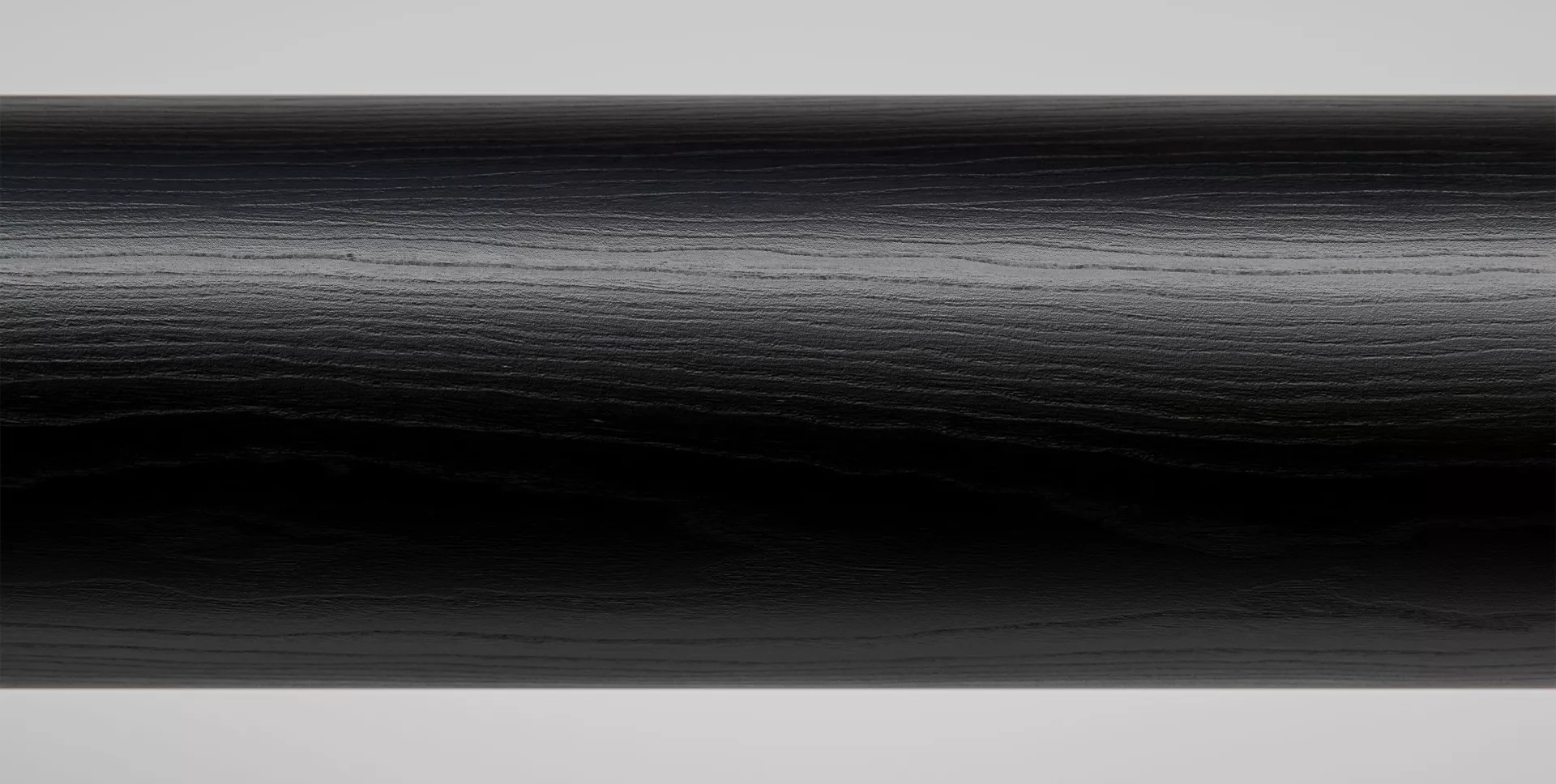
Staining is an excellent way to add color to wood while retaining its natural grain and texture. Unlike opaque paints, which create a uniform and often glossy surface, stain allows the wood’s unique pattern to show through, adding depth – especially in varying light conditions.
The most popular choice among our customers is a dark shade, often black. Black stain is both stylish and practical – it blends easily with different settings and effectively hides dirt and scuffs. For example, dark marks from shoes or socks on chair legs are often barely visible against a black-stained surface.
Though stained furniture generally requires little maintenance, it’s wise to use a polish specifically made for stained surfaces. This helps restore shine and extend the wood’s life.
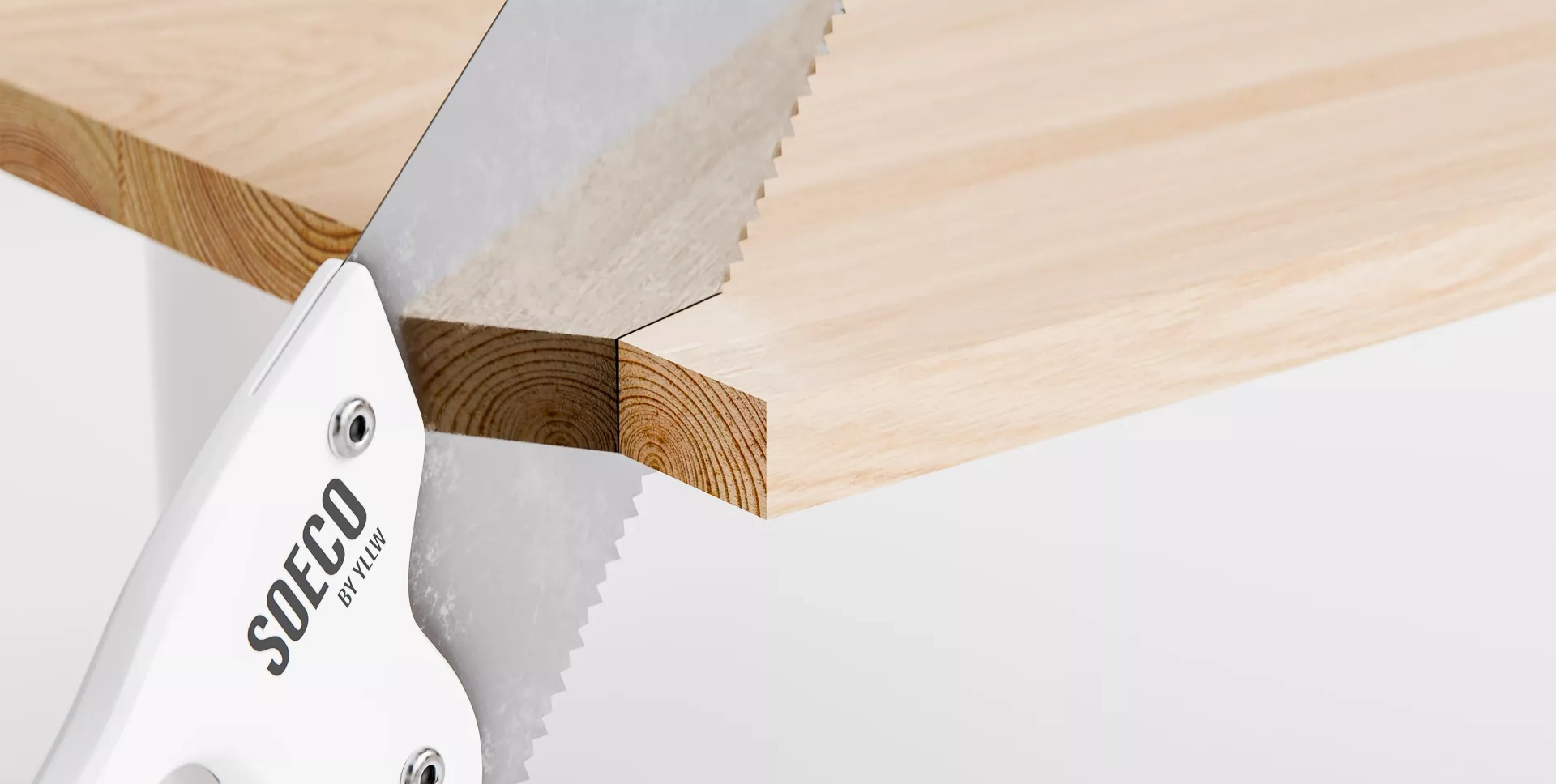
Solid wood is an excellent furniture material due to its strength, long life, and solid, quality feel. For tables in particular, solid wood is a major benefit because you can sand down the tabletop after years of wear. Just keep in mind that the sanded surface will need a new finish to restore protection.
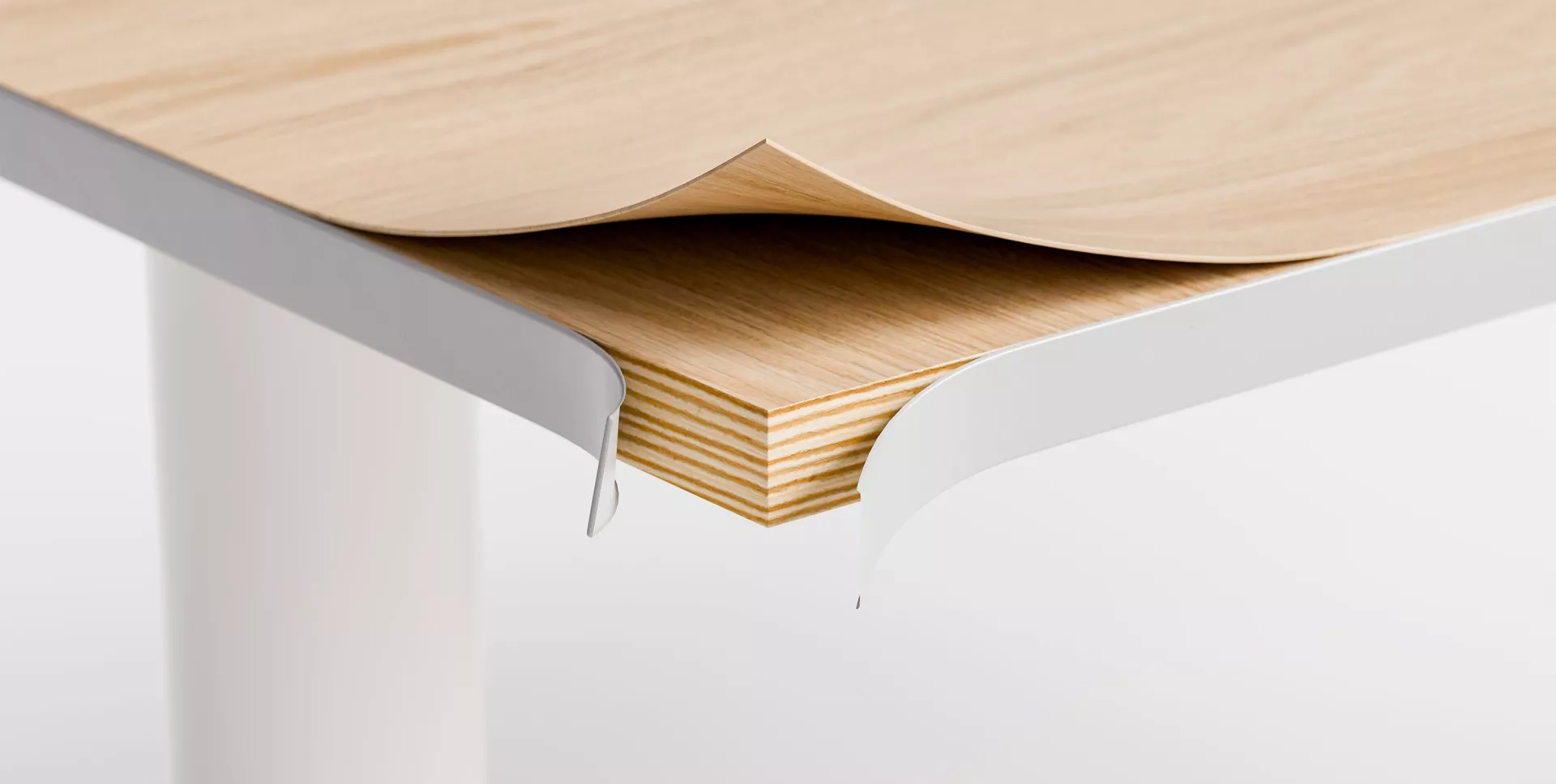
Veneer is a very thin layer of wood glued onto a different base material, such as plywood. Visually, veneer often looks identical to solid wood, offering the same beautiful, natural look. The downside is that veneer is typically only a millimeter thick, making it more vulnerable to scratches and dents – and unlike solid wood, it can’t be sanded down once damaged.
Dining tables are often less suited for veneer, especially in high-use environments like public spaces, offices, or homes with young children. However, veneer can be a stylish and cost-effective choice for desks or conference tables.
For items like chairs, armchairs, and shelving, veneer is a more sustainable option. Typically, the legs and frame are made from solid wood, while the seat or backrest may be veneered to make the seat or backrest may be veneered to make the furniture lighter and more cost-effective without compromising on aesthetics or quality.
We often encounter a preconceived notion that veneer is inherently inferior to solid wood – but this isn’t necessarily true. Many classic pieces from renowned manufacturers like Fritz Hansen or Artek use veneered surfaces. A veneered tabletop in good condition can last for many years and often withstand more than expected.
Care instructions
Dirt and stains
Among all the furniture in both the office and the home, tables are particularly prone to staining. Whether it’s the coffee table or the dining table, this is where we often place food and drinks – which easily leads to spills. Therefore, it's always a good idea to use coasters, regardless of the table’s surface treatment. In fact, rings from glasses are one of the most common types of marks.
If you want to avoid extensive maintenance, such as re-soaping, oiling, or lacquering the table, the best thing you can do is wipe up spills immediately. By dealing with stains as soon as they occur, you also help keep the table surface looking fresh for longer.
Dirt, however, affects more than just tables. A bookshelf may only need a bit of dusting, while chairs or armchairs often get marks on the front legs – especially from shoes or socks. With the right surface treatment, it’s usually enough to clean with a damp cloth. If the stain goes deeper, fine sandpaper and a new surface treatment can do the trick.
Sunlight
Wooden furniture has a wonderful ability to age beautifully – especially when exposed to soft daylight. But it’s important to avoid direct sunlight, especially during the furniture’s initial period, whether it's new or refurbished with a new surface treatment. At this stage, the wood is particularly sensitive and can quickly develop uneven discoloration.
A simple tip is to be mindful of how you place items like vases, candlesticks, or bowls on the table. If parts of the surface are constantly in shadow while others are bathed in light, clear differences in tone may develop over time.
Humidity
Since wood is a living natural material, it is greatly affected by the room’s humidity. For the wood to remain in good condition, the humidity level should be between 40 and 50 percent. If the level drops below 35%, the risk of so-called dry cracks increases – something that usually doesn’t affect the durability of the furniture, but can negatively impact its appearance.
Also avoid placing your furniture near radiators or open fireplaces, as the heat can dry out the wood faster than one might think – in some cases, damage can occur after just a few hours. An easy way to monitor the humidity in your home is to use a hygrometer.
Maintenance
How much and how often your furniture needs maintenance largely depends on its usage and the type of surface treatment it has. Always choose high-quality furniture care products from brands such as the Danish company Guardian. Make sure to always read the instructions carefully, and verify that the product is suitable for the specific wood type and surface treatment your furniture has.